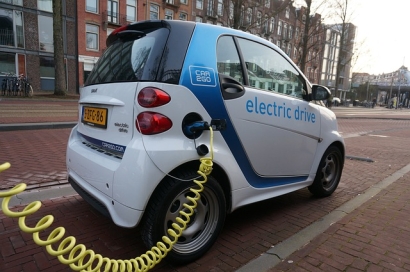
If current trends persist, the world will add as much renewable energy capacity in the next five years as it has in the previous 20. Simultaneously, many automakers have committed to producing only electric vehicles (EVs) within the next decade. This increased electrification will place unprecedented strain on the grid as rising renewable reliance will create uneven power generation, posing a logistical challenge.
Government bodies and utility companies must adapt to these shifting needs, developing new infrastructure to support a sustainable future. Here’s how they can.
The first step in developing sustainable energy infrastructure is decreasing reliance on the nation’s current large-scale grid system. Power outages have become increasingly common and lengthy as energy demands rise. Losses from long-range power transmission are becoming more impactful, and macrogrids’ inflexibility exacerbates the issue.
One promising solution is to encourage the development of smaller microgrids. Microgrids let users distribute excess power from their personal renewable infrastructure across the local community, providing more resiliency. Since it’s easier to balance uneven loads on a smaller scale, microgrids make it easier to rely on renewables as a whole.
It’s important to note that microgrids aren’t a total replacement for the national grid. Rather, they should enable local renewable growth and independence to provide nearby support when the macrogrid falters. That resiliency will be key to supporting broader electrification and reliance on less consistent renewables.
These new, more distributed grids must also take advantage of the internet of things (IoT). Wireless, interconnected smart devices are central to many sustainability initiatives, as effective ESG strategies require objective data to measure key performance indicators, and grid modernization is no different.
Smart transformers are among the most important IoT technologies for sustainable energy development. Since renewable energy generation varies depending on conditions like sunlight and wind, grids must be able to distribute energy according to real-time needs. Smart transformers act on real-time consumption data to determine and act on those needs, adjusting distribution to ensure all renewable-derived electricity goes to use.
IoT maintenance sensors will also prove important in preventing grid issues. Electric vehicle (EV) charging stations, renewable infrastructure and other grid systems require timely maintenance to avoid outages. Smart sensors that detect potential issues and automatically alert relevant workers enable those quick responses.
Finally, new energy infrastructure projects must emphasize low-impact development. As renewables grow, organizations must ensure these installations don’t interfere with natural ecosystems. Incentive programs that reward construction in already degraded or contaminated land will help this infrastructure expand while minimizing its ecological impact.
Similarly, grids must incentivize low-impact usage from customers to help balance strain and prevent outages. Technological improvements like bifacial solar panels, which gather light reflected off the ground, will make renewables more reliable, but they’re still inconsistent. Energy companies can work around that by rewarding customers for minimizing usage during peak hours.
Lowering rates during peak renewable generation hours is one possible solution. Companies could also offer reduced EV charging rates during off-hours to discourage heavy electrical consumption when the grid is already under strain. These steps will help balance energy generation and usage to minimize performance issues and outages.
Transitioning away from fossil fuels through EVs and renewables is an essential step forward. However, the combination of these trends means electrical demands will rise as power sources become less consistent. In light of that challenge, the nations’ underlying energy infrastructure must adapt to ensure each trend can grow with minimal disruption.
Microgrid development, IoT technology and low-impact incentive programs will help create infrastructure that can support both increased electrification and renewable growth. As that happens, the world can safely move toward a cleaner future.

